




















For years, Philadelphia has held a sanctuary city status, meaning local law enforcement does not work with federal agents to enforce immigration policies. Since becoming a sanctuary city in 2016, Philadelphia has seen a growing number of undocumented immigrants taking refuge in churches, knowing that Immigration and Customs Enforcement (ICE) and Customs and Border Protection (CBP) agents cannot enter those spaces.
However, President Donald Trump’s administration’s new immigration policy includes a Jan. 21 directive rescinding a 2021 Biden-era policy that protected “sensitive areas” from enforcement actions by ICE and CBP agents. These agents will now be able to enter schools, hospitals and churches, according to a Jan. 21 press release from the Department of Homeland Security (DHS).
Philadelphia is estimated to be home to nearly 50,000 undocumented immigrants, according to a report from the Migration Policy Institute.
Peter Pedemonti, co-founder and co-director of New Sanctuary Movement of Philadelphia (NSM), an immigrant rights group, said NSM began doing community education before the November 2024 presidential election and has responded to the rescission of the 2021 sensitive or protected areas memo by doing “know-your-rights” training with its 35 member congregations.
“We’re doing a lot of workshops,” Pedemonti said. “We’re doing support for our member congregations about putting a plan together if ICE actually did show up at their church or synagogue.”
NSM advocates for immigration reform and rights and provides support to immigrant communities in Philadelphia. NSM also attends immigration court in small groups to ensure that undocumented immigrants feel supported and have a community behind them.
Pedemonti said it is important that people stick together, even if their instinct is to isolate.
“I think there’s also power in more numbers, bringing more people together so that we can push for policy change,” Pedemonti said. “We’re doing a lot of education for the community.”
Similar awareness education has taken place at St. Joe’s, providing St. Joe’s community members with direction, should they encounter law enforcement on campus.
The university does not collect or document information about St. Joe’s students’ citizenship status, said David Finnie, assistant vice president of the Office of Public Safety & Security (OPSS).
Faculty and staff members should follow existing university protocol if any local, state or federal law enforcement appear on any of the university’s three campuses, Finnie wrote in an email to The Hawk. That protocol advises community members to contact OPSS, which will coordinate with
the Office of General Counsel (OGC). Warrants, court orders and subpoenas also should be directed to the OGC.
“This protocol ensures compliance with legal requirements while respecting the rights and privacy of our community members,” Finnie said.
Dean of the College of Arts and Sciences, James Carter, Ph.D., said he passed along information about the university’s protocol to department chairs in a recent meeting.
“We’re not making policy,” Carter said. “But we are establishing procedures for how to respond to a situation.”
Paul Patterson, Ph.D., professor of English, shared the university’s protocol with his students. He said, as a Jesuit Institution, St. Joe’s mission calls on people to protect others.
“I think that as faculty and students, and as a part of this broader community, we should be looking to protect those who are most vulnerable in our community,” Patterson said.
Pope Francis criticised the U.S. government’s program of mass deportation of undocumented immigrants in a Feb. 11 letter to U.S. Bishops.
In the letter, the pope acknowledged the right of a nation to “keep communities safe from those who have committed violent or serious crimes” but took issue with the attribution of criminality to immigrants without status, writing, “I exhort all the faithful of the Catholic Church, and all men
and women of goodwill, not to give in to narratives that discriminate against and cause unnecessary suffering to our migrant and refugee brothers and sisters.”
Responding to national and local conversations focused on immigrants and immigration, the archbishop of the Roman Catholic Archdiocese of Philadelphia, the Rev. Nelson Pérez, D.D., issued a press release Jan. 20, writing, “With sadness, I have witnessed a broad variety of reactions to this topic marked by heightened anxiety, fear, anger, and polarization.”
Pérez noted in the press release that “The Philadelphia region has a long history of welcoming people from other lands who are fleeing oppression and seeking better opportunities for themselves and their families,” and that immigrants “are our brothers and sisters. They were created in the image and likeness of God. They deserve dignity, respect, compassion, and fairness.”
Pérez’s words resonate with Pedomonti, whose organization also connects people to immigration lawyers and supports immigrants during court appearances.
“We are a faith-rooted organization,” Pedomonti said. “I think it’s important to have that representation of God’s presence there.”
Alex Andahazy ’25 contributed to this article.


expectations regarding AI use clearer, said Aubrey Wang, Ph.D., professor of educational leadership, counseling and social work and interim director of OTL.
Starting this semester, St. Joe’s faculty are expected to include a statement on the use of artificial intelligence (AI) in their course syllabi, according to an email to faculty from the Office of Teaching and Learning (OTL).
With the recent growth of generative AI technologies’ usage, universities across the country have implemented new policies, which have prompted debates as to how and when generative AI programs, like ChatGPT and Perplexity AI, should be permitted in classrooms, if at all.
A 2024 Harvard study, Teen and Young Adult Perspectives on Generative AI, found that just over half of young people ages 14 to 22 have used generative AI at some point in their lives, with 4% indicating they use AI daily. The report also examined the most common uses of AI, finding that 53% of AI users use it to gather information, 51% use it to brainstorm and 46% use it for schoolwork help.
Young people also are excited by the potential ways AI helps them access information for both work and school, and in regards to schoolwork, teens want adults to know they are using AI “as a regular part of their schoolwork and learning, including — but not only — for cheating,” according to the study.
In response to this greater awareness and use of AI, OTL has implemented a multi-year strategy to increase student and faculty knowledge of AI and to make
Wang said it is important for both students and faculty to practice critical thinking, communication, teamwork skills and AI literacy as AI continues to evolve.
“We’re trying to develop students’ awareness of the ethics around AI and the fact that a lot of AI-generated content might have hallucination built in, they might have bias, and one just cannot use the AI-generated content as it is,” Wang said. “It really requires humans to take another look at it, to evaluate it, to compare it and learn from it.”
Although it is expected that all faculty include a statement regarding AI use on their syllabi, Wang said faculty are free to use their discretion in creating AI policies for their specific courses. OTL recommends three potential approaches to AI syllabus statements: restrictive, prescriptive or permissive.
The restrictive approach prohibits use of AI entirely. The prescriptive approach allows use of AI in some forms but not in others (for example, allowing a student to use AI to check grammar and spelling, but not to write full responses for them). The permissive approach allows full use of AI and may involve the required use of AI to complete specific tasks or learn certain skills. A professor may apply any of these approaches depending on their course’s objectives and learning goals, Wang said.
Some professors, such as Richard Haslam, Ph.D., associate professor of English, have
applied a more restrictive approach to AI use. Haslam prohibits use of “machine learning applications of any kind” for his courses, and all assignments are completed in class, on paper.
Haslam first implemented this policy in his syllabi in the spring 2023 semester. He said machine learning applications can interfere with students’ reading, writing, listening and speaking skills, as well as interfere with the university’s mission statement.
“In my own particular field, I don’t see any good coming from it,” Haslam said. “One other thing that’s mentioned in the mission statement is a rigorous education. I think that it interferes with a rigorous education, and it interferes with thinking critically, those two parts of the mission statement.”
While Haslam is opposed to AI use in his field of literary studies, he recognizes that other disciplines may differ in their approaches.
Ruben Mendoza, Ph.D., associate professor of decision and system sciences, has employed a more permissive approach when writing his AI policy. Mendoza said he encourages students to use AI as a tool for research.
“The syllabus says, ‘Use it. Use it all the time. Look it up,’” Mendoza said. “In the end, for me, for my course, for my assignments, it won’t matter. It can only help you.”
Mendoza said AI can be either a valuable tool or a potential drawback, depending on how it is used.
“I don’t see the tool in and of itself as
being a problem,” Mendoza said. “It can be a problem, but the problem is created by how the student uses it.”
Many students are navigating appropriate ways to use AI throughout their courses. Sean Parchesky ’27, a finance major, said he doesn’t use AI to do his work for him but does use it to check his work, particularly for math problems. He said the way AI is used is what truly matters, as its impact depends directly on the approach.
“I think using the right context, it could definitely be a good tool to help with learning,” Parchesky said. “But I also feel like a lot of people are abusing it already, so it makes a tricky situation.”
Wang said implementing clearer AI policies in syllabi will help faculty prepare students for their chosen fields as more industries begin to use AI technologies.
75 faculty members were able to complete an asynchronous course on teaching with AI during the summer of 2024, Wang said, and in the fall of 2024, OTL developed a guide for the use of AI in higher education, available to the St. Joe’s community.
“AI is constantly evolving, and I think the dialogue around it is certainly evolving as well,” Wang said. “Through the multi-year strategic plan that we have, our goal is making sure that our faculty are learning their foundational concepts around AI and using AI in teaching and then, based on their discipline and their learning objectives, choose the best policies that suit them.”
Feb. 8
Public Safety notified of a vandalism incident in the Hawks’ Landing parking garage. Public Safety responded and the incident is being investigated.
Public Safety notified of a theft incident in Post Hall. Public Safety responded and the incident was investigated.
Public Safety notified of a trespassing incident in Post Hall. Public Safety responded and the incident was investigated.
Feb. 9 No incidents to report.
Feb. 10
Public Safety notified of a theft incident in the Hawks’ Landing parking garage. Public Safety responded and the incident is being investigated.
Feb. 11 No incidents to report.
Feb. 12 No incidents to report.
Feb. 13 No incidents to report.
Feb. 14 No incidents to report.

The national conversation on immigration has intensified in recent weeks with the enactment of new policies specifically targeting undocumented immigrants. This has prompted a wide range of responses, most notably from Pope Francis, who has excoriated the current climate of hostility toward migrants. The university has pledged to follow applicable federal and state law regarding law enforcement access to private property. This means the university will require law enforcement agents to present valid judicial warrants to gain access to non-public areas of the university, such as classrooms and residence halls.
This step signifies that St. Joe’s is
committed to protecting and respecting theprivacyandrightsofourcommunity by affirming that the university is not legally obligated to grant access to law enforcement without a warrant. This is, undoubtedly, a positive sign, and the university should be commended. It is worth noting that this is an existing policy. Any member of the community encountering law enforcement should follow the university protocol and direct them to the Office of Public Safety & Security (OPSS).
Any university policy must be rooted in an innate respect for human dignity. Federal policy seeking to invalidate the human dignity of certain communities should not trump the call
to w elcome all individuals, regardless of their background. There are some who might say this issue, emotional as it may be, should not provoke a response. But this is an issue that affects virtually every member of our Philadelphia area community. It would hardly be a stretch for anyone to find a personal connection. But, even if that weren’t the case and the issue of immigration could be wholly separated from St. Joe’s, the university’s stance would still be the correct one. As a Jesuit institution, upholding the dignity of all humans — those we know and especially those we don’t — must be the paramount focus of any internal or external directive.

The U.S. Constitution’s system of checks and balances is a cornerstone of American democracy. By dividing power among the executive, legislative and judicial branches, it ensures that no branch can overstep its bounds. While frustrations with political gridlock may tempt policymakers to bypass these guardrails, doing so threatens the principles that keep the United States a stable democracy.
The system’s main purpose is to prevent any single branch from becoming too powerful. The legislative branch creates laws, the executive enforces them and the judiciary interprets them. The authors of the Constitution understood that concentration of power could ruin our democracy. The distribution of authority ensures that no branch can dictate the direction of the country without the consent of the others.
In today’s political world, frustration with legislative gridlock is noticeable. When one branch blocks a policy to further its political agenda, it can feel like the system is broken. However, this is when checks and balances prove their value. The rigorous review process, even if it is
slow, ensures policies are carefully considered and serve the public’s best interests.
This danger is especially evident with Vice President JD Vance, who has expressed frustration with the system. He has suggested that bypassing these constitutional checks might be necessary to push the Trump administration’s agenda. This idea signals a troubling willingness to undermine the balance of power. If the president can overpower Congress or the judiciary branch in pursuit of their personal agenda, it risks deteriorating democratic institutions, as well as
opening the door to unchecked executive power.
Ignoring or undermining the system of checks and balances would destabilize America’s democracy. If our Constitution allows for quick, unchecked decisions that benefit those in power while harming its citizens, our democracy will crumble to pieces. The Constitution’s checks and balances are not an inconvenience but a vital protection against tyranny. Upholding them ensures that decisions are made with caution and accountability, which protects the rights that define this nation.

SAHR KARIMU ’26 Hawk Columnist

With Cupid having flown by on Valentine’s Day, I’ve been reflecting on love through the prism of my Christian faith. I began by contemplating love as both a noun and an action. Jesus’ life on Earth was an example of a grand, actionable love. During Jesus’ ministry on Earth, he demonstrated this love in his service to others and repentance of sin. He calls his disciples to an actionable love of service.
Reflecting on Jesus’ life in view of his call to “love one another,” I’ve found that displaying the large love of God
can be done in both big actions and small everyday ways.
In the Gospel of John, Jesus demonstrates servant leadership by washing his disciples’ feet. Culturally, this was a big action, as the act was typically reserved for low-status servants. Jesus, as God’s incarnate, demonstrated humility and love for his followers in this action that would be brought to completion in his death on the cross. Jesuit institutions, such as St. Joe’s, encourage service as a way to continue Ignatian traditions inspired by faith through institutionalized programming.
In following Christ and reflecting on this love, I’ve learned it does not always have to be formalized through
service, though those ways are still valuable. Loving my neighbor can come in everyday ways. Sometimes, for me, it’s paying a compliment, or it’s intentionally caring for the well-being of others around me. It can come in the form of working hard at my responsibilities so that those who benefit from them will reap their fruits, or maybe it’s simply buying my friend a snack. The love of God is a noun in its reality, but it is also a verb. Jesus’ life and death for the world’s sins was the portrayal of that action. I’ve found that I can reflect this verb that Jesus portrayed in ways both big and small.

CAROLINE TRIMBLE ’26
Hawk Columnist

Nearing the end of his first term, President Donald Trump attempted to withdraw the United States from the World Health Organization (WHO), claiming the agency was under Chinese influence and responsible for the mishandling of the covid-19 pandemic. Although former President Joe Biden overturned this decision in 2021, Trump made leaving WHO an early priority for his second term. In a Jan. 20 executive order, Trump withdrew the U.S. from WHO for the second time, arguing the agency failed to “adopt urgently needed reforms” and ignored “inappropriate political influence” from WHO member states.
GRAPHIC: STEPHANIE SAVELA ’25/THE HAWK
The effects of the United States’ withdrawal from WHO are expected to be costly. The loss of U.S. funding will hinder WHO’s ability to support its endeavors, including the eradication of polio, maternal and child health services, and viral research. The loss of American medical knowledge and resources will likely also weaken WHO’s ability to adequately respond to future public health crises.
The U.S.’s withdrawal from WHO doesn’t just affect the organization’s efforts. It will exclude the U.S. from agency initiatives, notably “the yearly composition of flu vaccines” and “access to genetic databases,” according to the Associated Press. This loss of collaboration with WHO could stall U.S. efforts to produce vaccines and medication, potentially threatening the nation’s public health.
Global leaders and leading health experts were quick to comment on Trump’s decision. Former New Zealand Prime Minister Helen Clark believes it is not in the United States’ best interest to pull out of WHO due to the impending spread of bird flu and its potential worldwide detrimental effects. This sentiment is echoed by Lawrence Gostin, J.D., Georgetown University’s director of the WHO Collaborating Center on Global Health Law, who believes “‘a U.S. withdrawal from WHO would make the world far less healthy and safe’” and would devastate the organization’s disease response efforts.
Trump’s decision to withdraw the United States from WHO is yet another policy initiative demonstrating the Trump administration’s isolationist ideals — ideals which may prove to have devastating effects on national and international public health
JARED NACHIMSON ’27 Columnist
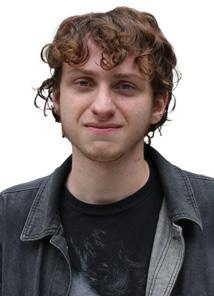
To say this past month’s political news has been hectic is an understatement. Everything from debacles about tariffs to arguments over the validity of government “efficiency” efforts have raised concerns. Despite this, an up-and-coming politician has attempted to move past the bitter partisan rivalries in his state, even with his party’s underwhelming results in the 2024 election cycle.
I am, of course, referring to Pennsylvania Governor Josh Shapiro, a Democrat, who, despite being passed up for the vice presidential nomination and his party’s power being curtailed in Pennsylvania, has undertaken the task of unveiling the state’s
upcoming proposed budget. This seemingly mind-numbing, mundane task is delegated to the most bureaucratic of executives, but, nevertheless, has far-reaching implications for the state’s trajectory.
Many of the budget’s components were outlined during Shapiro’s third budget proposal, including significant promises to equitably fund infrastructure and education, with the latter issue mandated by a 2023 Pennsylvania Supreme Court decision to be immediately reformed. Also outlined is a surprising initiative to legalize cannabis in the state. Shapiro, alongside a few compromising Republicans, has begun to reconsider the state’s perspective on cannabis legalization, recognizing the positive financial capabilities in authorizing the growing, selling and manufacturing of cannabis-related products.
This also addresses the ridiculous situation Pennsylvania finds itself in, surrounded by states that have already legalized and benefited from the wholesale profitability of the cannabis industry. Despite the supposed compromise, many Republicans in the Pennsylvania legislature still appear recalcitrant on the misspending of state funds in the proposed budget toward initiatives that might hinder Pennsylvanians, such as the possible negative economic strain caused by a supposed overreach of the budget towards things like education, while championing provisions that would make the state economically and energy independent.
It is fair to say that most students are indifferent to the seemingly inconsequential partitioning of state funds throughout the state. However, especially with the
in the future.

interesting emergence of the cannabis legalization debate and the increasing political divide as to where funds should be allocated, students, regardless of age or knowledge of politics, should be attentive as to where state funds go.

JAKE RICHFIELD ’27
Opinions Editor
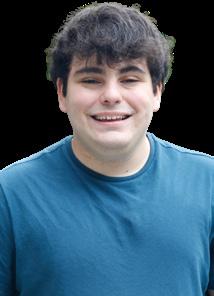
The Second Amendment of the Constitution confers the right “to keep and bear Arms” to the people of the United States; however, the civil liberties granted by the Bill of Rights are not, and should not be, without their limitations. As famously declared in the Supreme Court case Schenck v. United States, you cannot yell “fire” in a crowded theater, despite the First Amendment granting the right to freedom of speech. While the rights of individuals are vital to our democracy, society as a whole has a collective right to safety that shouldn’t be superseded by these rights.
However, when it comes to the Second Amendment, this collective right is not prioritized enough, and President Donald Trump’s administration seems poised to
continue this trend. Within his first days in office, Trump disbanded the White House Office of Gun Violence Prevention, and its website was taken down. The office, established by the Biden administration in 2023, was tasked with coordinating efforts by federal agencies in response to mass shootings and ensuring gun laws are properly enforced. Subsequently, Trump, through his executive order “Protecting Second Amendment Rights,” stated that the office should be reviewed to “assess any ongoing infringements of the Second Amendment rights of our citizens.”
For students, gun violence, especially mass shootings, is a significant concern. Since the Columbine High School shooting in 1999, school shootings have been ingrained in the American consciousness, and the situation has only worsened over the years. The year has barely begun, and the United States has already experienced four school shootings in 2025. As this crisis continues, our federal government
should be supporting efforts to combat mass shootings, not shutting them down. While local organizations and our state’s own office — Pennsylvania’s Office of Gun Violence Prevention — will
not enough. All levels of government should be working to combat this national crisis, especially at the federal level. Unfortunately, at least for the next four years, this seems unlikely to be

Milton O’Brien’s journey to St. Joe’s begins over 3,000 miles away from Hawk Hill in his hometown of Las Delicias in El Salvador.
It was there, at age 4 or 5, that the senior international business and marketing double major first met Sister Gloria Petrone, a member of the Handmaids of the Sacred Heart of Jesus. At the time, Petrone coordinated a volunteer ministry with Project FIAT (Faith in Action Together), which took her and fellow volunteers to Las Delicias.
O’Brien remembered meeting Petrone as a young child, and the connection they shared.
“I feel like she always took an appreciation for me,” said O’Brien. “She understood the situation I was in.”
At the time, O’Brien was no longer living with his birth parents and was in the care of his great-grandmother.
The work of Project FIAT was mainly focused on addressing housing insecurity for communities in El Salvador, but the volunteers also had programs for children.
Project FIAT is no longer operated by the Handmaids, but their work lives on through a new program called Building Futures Project which continues Project FIAT’s focus on education, food assistance and housing.
“A lot of us didn’t have resources to have food at times, so they had a lunch program before we would go to school,” O’Brien said. “The volunteers would play with us, and they would do games, and you would win prizes, but it was funny prizes, like toothbrushes and toothpaste.”
In the midst of these interactions, O’Brien recalled that Petrone seemed to take notice of him in particular.
“She made a promise to my greatgrandma to find me a home once she passed away,” O’Brien said.
O’Brien’s great-grandmother died in 2011 or 2012. O’Brien isn’t sure of the year. But he does remember that Petrone kept her promise and began searching for a family to adopt him.
International adoptions through the El Salvadoran government were often complicated and time consuming. Petrone knew that not everyone would be able to commit to the lengthy process and made that clear when meeting Anne O’Brien ’89 and her husband Jim O’Brien for the first time.
“When they first met with Sister Gloria, she told them, ‘If you’re not going to be for real with this, I’m not even going to tell him that this is happening because I don’t want
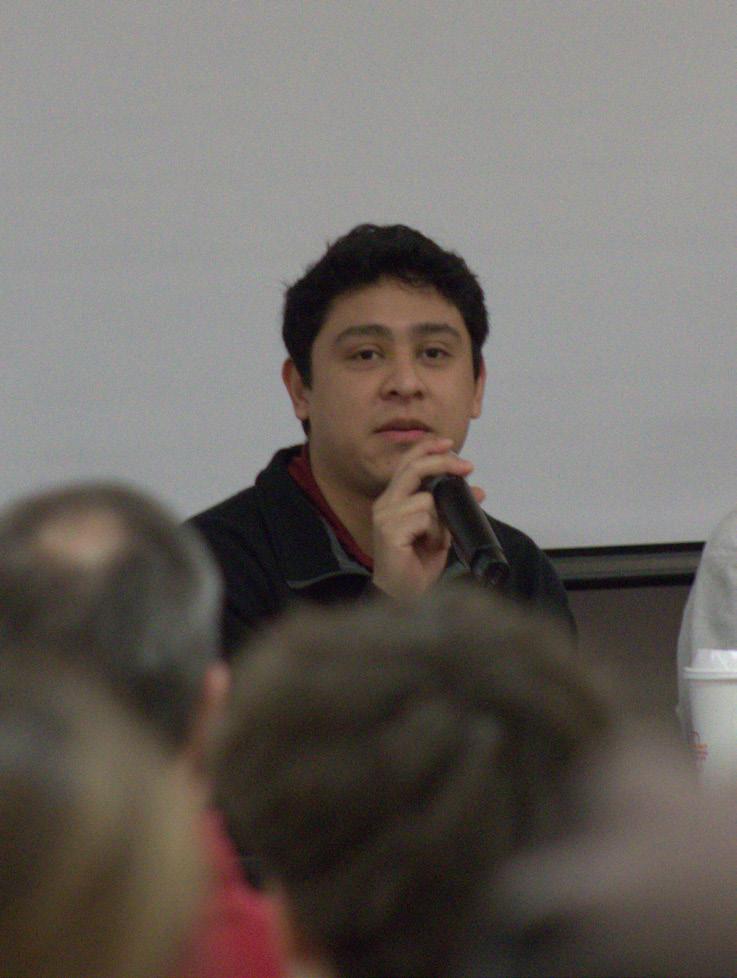

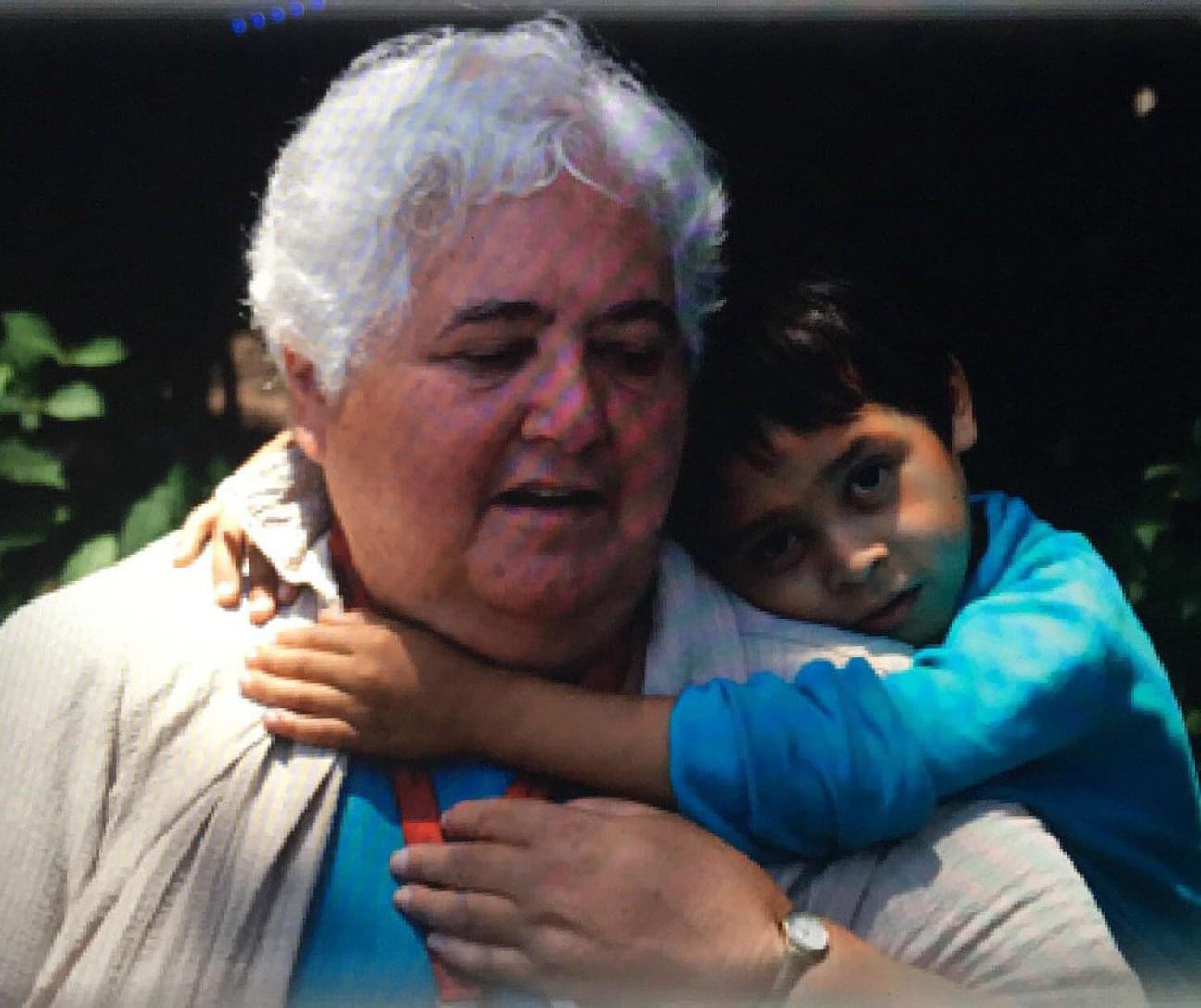
to break his heart,’” Milton O’Brien said.
Anne and Jim O’Brien were fully committed to what ended up being a five-year adoption process that ended on Christmas Eve 2016 when 15-year-old O’Brien arrived in the United States.
Petrone continued looking out for O’Brien until she died in 2024 at the age of 82.
Adjusting to life in a new country was not always easy for O’Brien, and there were times he felt his background made him stand out from the rest of his classmates.
“During that time, my accent was really thick,” O’Brien said. “It was 55 degrees, and I was wearing a winter jacket. And the kids would point it out like, ‘Hey, why are you wearing a winter jacket?’ I’m like, ‘Dude, I’m cold.’ Small stuff like that, where you don’t know how you’re gonna connect with the people because you never lived it.”
The adjustment became easier for O’Brien during his time at Philadelphia Academy Charter High School (PACS). There, O’Brien further developed his leadership skills, serving as both student council president and president of the school’s National Honor Society.
When it came time for O’Brien to look at colleges, St. Joe’s was one of 10 schools he applied to. Apart from being his mother’s alma mater, O’Brien said because of his background, he felt drawn to the school’s emphasis on community service. One day, while reviewing a St. Joe’s admissions pamphlet, O’Brien came across a picture of a St. Joe’s student doing service while wearing a Project FIAT shirt. Over the years, St. Joe’s had sent groups of students to El Salvador through the FIAT Program.
“I think that was a little push of, ‘Okay, I’ll be on the right path if I go to St. Joe’s,’” O’Brien said.
O’Brien’s passion for community service inspired him to participate in the early arrival Philadelphia Service Immersion Program (PSIP). During PSIP, O’Brien met the Rev. Dan Joyce ’88, S.J., vice president of mission and ministry at St. Joe’s.
The interaction was memorable for O’Brien, who recalled Joyce introducing himself in Spanish. Joyce had learned about O’Brien and his background in El Salvador through his connection with Petrone and the Handmaids. Petrone, who had kept in touch with O’Brien, reached out to Joyce after hearing about O’Brien’s plan to attend St. Joe’s.
“It was that connection again,” O’Brien said. “Sister Gloria looking out for me.”
O’Brien said he originally had no intention of becoming a part of the University Student Senate. He felt his time in student council at PACS had been enough
for him. However, at the start of his first year at St. Joe’s, O’Brien visited Joyce on the back porch of Wolfington Hall. During this conversation, Joyce suggested O’Brien run for Senate.
“I could see that he was a true leader and very committed to the goals and mission of St. Joe’s,” Joyce said.
It was this push that encouraged O’Brien to run for the class of 2025 senator his first year. Since then, his roles in Student Senate have included secretary of academic affairs his sophomore year and vice president of Hawk Hill his junior year. In spring 2024, the student body elected him president.
As president, O’Brien said he strives to create an environment that is open to the cares and concerns of his fellow senators and the larger student body.
Anna Monari ’26, vice president at Hawk Hill, said she has witnessed O’Brien’s leadership in action.
“He is the type of person that really benefits from feedback,” Monari said. “Whether that be coming from the students as a whole, the community as a whole, peers, faculty or even me as a friend, he really takes everything that people say to him, and he tries to do everything that he can to accomplish it.”
O’Brien believes that his growth as both a leader and an individual in the past few years has come from being able to share his story with others.
“The reason I do talk about my story is to be able to recognize the resilience that you can build from things that may not be good in your life,” O’Brien said.
One way O’Brien chose to share his story was through a Day of Dialogue session he ran with Ariana Zablah Mejia ’26 in February 2024. In attendance was Peter
Norberg, Ph.D., professor of English and senior associate provost for academic and faculty support.
During the presentation, O’Brien shared a photograph that had been taken during his time in El Salvador. Norberg recognized a woman in the photograph as his wife, Elizabeth Norberg. It had been taken in 2009 during Elizabeth Norberg’s time serving with Project FIAT in Las Delicias.
In Las Delicias, Elizabeth Norberg worked closely with children like O’Brien. She remembered first meeting O’Brien when he was five years old and the way he took her hand and showed her around his town. She was moved by O’Brien’s friendly nature and the way he cared for his community. The two had not seen or spoken to each other in many years.
After the presentation, Peter Norberg went home and told his wife about the photo. Elizabeth Norberg reunited with O’Brien in May 2024.
“I felt like my heart exploded,” Elizabeth Norberg remembered. “It was like we had never lost any time.”
During this reunion, Elizabeth Norberg gave O’Brien an album of photos she had taken in El Salvador. The album included photos of a young O’Brien and his community in Las Delicias.
Elizabeth Norberg and O’Brien continue to keep in touch, and Norberg said she loves hearing about all that O’Brien has accomplished as a leader at St. Joe’s and beyond.
“It doesn’t surprise me a bit,” Elizabeth Norberg said. “Milton lives his life led by his heart.”

Biodiversity Lab works to protect endangered species

‘There’s not another lab that I know of in the world that’s like it’
Thirty-four tanks filled with varying levels of water stand against the three walls of the Biodiversity Lab in the Science Center on Hawk Hill campus. The tanks contain a variety of species of fish, reptiles, amphibians and insects.
Among these creatures are goldfish, angel fish, blind cave fish, poison dart frogs, a mourning gecko, a yellow-spotted Amazon river turtle, a snapping turtle named Manny and a bearded dragon named Helena. There are 40 species of turtles, with about 200 individual turtles.
Maggie Stinson ’25, one of several lab coordinators, said she visits the lab almost every day of the week to check in on the animals and feed them.
“I come in Monday, Wednesday, Friday and feed Manny,” Stinson said. “I give him about a handful of this stuff we call ‘trout chow,’ which is a combination of nutritious food for turtles. I give him lettuce. He likes lettuce.”
Stinson said she has worked in the lab for almost four years.
“I’m a communications major, and
strangely enough, I started off biology and figured out I didn’t really like it after being in it for a year,” Stinson said. “But, at that time, I was a volunteer at the lab, then later went on to be an intern and stay in the lab.”
The Biodiversity Lab was started in 1990 by Scott McRobert, Ph.D., professor of biology, who teaches animal behavior and ecology. McRobert said he has used the lab for education and research.
“There’s not another lab that I know of in the world that’s like it, because we have a wide variety of endangered species, and we’re doing research on insects, fish, amphibians and reptiles,” McRobert said.
McRobert said the lab has many turtle species, some that not even the Philadelphia Zoo has. Fifteen of these species are endangered either globally or in the U.S.
“It’s a little bit sad of a way to think about it, but we have some animals that might go extinct,” McRobert said. “We are maintaining them to keep their genetics alive in the hopes that someday down the road, they may be able to be reestablished.”
McRobert said the biodiversity lab has many red-eared sliders and mud turtles. Two mud turtles in particular have been


with McRobert for over 35 years and have given birth to almost all the mud turtles in the laboratory.
Additionally, McRobert said the lab has thousands of guppies, a common freshwater fish.
“We use them in our research,” McRobert said. “But they’re very prolific. They breed like crazy in captivity. We use them as a secondary filtration system for our turtles.”
Colin Morton ’25, a lab coordinator for three semesters, said he joined the lab to get course credit but ended up really liking the lab the first time he stepped inside. Morton said his favorite animal in the lab is Helena, the bearded dragon.
“The first time I took her out, she just latched onto my shirt, and I was just like, ‘This is the coolest shit ever. This is a creature on me,’” Morton said. “She’s so chill.”
For Stinson, the turtles are fascinating.
“People don’t think about reptiles as having their own unique personalities or being good pets,” Stinson said. “They don’t show as much emotion as dogs or cats. They’re not gonna come running up to you always, but they show emotion in their own way.”
For example, Stinson said that sometimes she will brush the back of Manny when taking care of him. She said she knows he likes it because he will do a “shimmy.”
“Every turtle, I believe, has its own unique personality,” Stinson said. “The ones I work with definitely have their own personalities.”
McRobert said environmental science majors are keenly aware of the issues plaguing the natural environment, but the Biodiversity Lab is a place that many potential St. Joe’s students are interested in.
“People are just excited to see it,” McRobert said. “They bring a lot of school tours through here. I’ve had people say they came to St. Joe’s because of my lab, even though they’re not science majors. They just love it. It made them think, ‘Wow, this is interesting.’ I think it’s a really great thing to stimulate people’s interest in science.”

TESS MARGIS ’26
Features Reporter
GAVIN KUEBLER ’25
Assistant Features Editor
Two plaster casts of unidentified apostles can be found on display in the Chapel of St. Joseph for Mission Week, where they will be cleaned and preserved.
Given to St. Joe’s by the Metropolitan Museum of Art (MET) in New York City, the casts are slightly over five feet tall. They were likely created in the 19th century and were gifted to St. Joe’s in 2009, where they have largely remained in storage.
The casts are recreations of statues from Cathédrale Notre-Dame d’Amiens in Amiens, France, which was built in the 13th century. The cathedral depicts the mission of the Twelve Apostles, with Christ in the center.
Celeste Friend ’26, an intern at the Frances M. Maguire Art Museum, is working on finding out which apostles the statues depict.
“I’m doing a lot of research trying to figure out who they are, but they’re vague,” Friend said. “There’s not standout symbolism or iconography that tells us which apostles they are, but I’m talking with people from the MET right now, trying to figure out who they may represent.”
Friend says an object conservator is coming to clean the statues. They’ll then be painted to match the casts that are currently on display at the Maguire Museum.


The statues are part of a larger collection of plaster casts that were given to St. Joe’s by the MET. The collection was lent to the university in 1999. Half of the collection was gifted to St. Joe’s in 2009, and the other half is still on loan.
Jeanne Bracy, associate director of the Maguire Art Museum, discussed the project as part of larger St. Joe’s events and initiatives.
“We wanted to tie this in with Mission Week because it’s preserving religious art,
OLIVIA GASPARRO ’27
Features Columnist

Across
2.Eagles Quarterback known for his rushing and passing (last name).
5.The famous rallying cry Eagles fans shout at any time and for any reason during football season.
7.The home stadium of the Philadelphia Eagles.
9.“Fly, ___ fly, on the road to victory!”
Down
1. The city of brotherly love.
3. This coach has led the Eagles to two conference championships and a 2025. Super Bowl win since 2021 (last name).
4. Rookie cornerback who helped lead the Eagles to their 2025 Super Bowl victory (last name).
5. The color that transforms Philadelphia into Emerald City.
6. Eagles mascot who cheers the team on as they fly to their victory.
8.The book that gave wide receiver A.J. Brown the ability to prepare for the 2025 Super Bowl.
and, at the museum, we have a lot of other activities planned,” Bracy said. “One of my ideas with this internship project was to make it possible to learn more about conservation, what we do in the museum, our collection and how students can get involved.”
Erin Downey, Ph.D., assistant curator at the Maguire Art Museum, also helped in developing the project and finding a place on campus for the casts.
“This was really an ideal situation for us where we were able to take two works
that are really beautiful, that have this wonderful history and had such great potential, and finally be able to place them into more of an accessible space for our students, faculty and staff, while also building on our educational purpose,” Downey said.

CHRISTOPHER SLETVOLD ’26 Columnist
Baseball season is once again upon us. Philadelphia Phillies pitchers and catchers reported to spring training in Clearwater, Florida Feb. 12 and were joined by the rest of the squad Feb. 17. The roster has undergone few changes since another disappointing playoff exit last season. The most notable move may have been one that did not happen: the lack of an Alec Bohm trade. Even with a quiet offseason, there are many things worth tracking this spring. Here are three major storylines to keep an eye on as the Phillies begin their spring training schedule Feb. 22.
1.What happens with the outfield rotation?
The Phillies have struggled to establish a steady outfield rotation over the last few seasons due to a lack of depth. Nick Castellanos is unquestionably the starting right fielder, but finding players to start alongside him has been a challenge for manager Rob Thompson.
Brandon Marsh and Johan Rojas, both outstanding outfielders, primarily started alongside Castellanos the last two seasons. However, both are limited offensively. Marsh struggles against lefties, and Rojas is one of the worst hitters on the team. Thompson has tinkered with rotating both players out in the postseason to minimal success. The team acquired Austin Hays at the trade deadline last season to provide depth, but he struggled.
Now, the Phillies hope Max Kepler can fill out the rotation. Kepler slashed a .253 batting average, .302 on-base percentage and .380 slugging percentage last season with the Minnesota Twins, even while being limited by injuries. He hit 24 home runs in 2023, so he is a bounce-back candidate if he can stay healthy. Kepler has primarily played right field throughout his ten-year career in Minnesota, but Thompson will deploy him in different positions. Kepler bats left-handed, so either he or Marsh can platoon with Rojas and provide lineup versatility. The outfield bats must take a leap this year, as they have been the offensive weak spot in the Phillies’ last two failed playoff runs.
2.Who will be the backup catcher?
This is admittedly not the most exciting role on the team, but there will be a battle for it. J.T. Realmuto is 33 years old. The Phillies have indicated they want to give him more off days this year, which places more importance on the backup spot.
Garrett Stubbs, Realmuto’s backup for the last three seasons, has declined offensively over the last couple of years. Twenty-five-year-old Rafael Marchan played well in 17 appearances last season and has a chance to win the job. Marchan is younger than Stubbs but is out of minor league options. It is time for him to prove that he can stick in the majors.
3.Which prospects show flashes?
Most of the Phillies’ roster is set in stone, with only a few question marks

around the bullpen and depth. The Phillies, therefore, may provide more opportunities to their prospects this spring.
Top prospect Andrew Painter is still recovering from ulnar collateral ligament reconstruction, more commonly known as Tommy John surgery, but other youngsters will get run. Aidan Miller, a first-round pick in 2023, was invited and will get to face high-level competition early in his young career. Twenty-one-year-old Justin Crawford played well across High-A and AA ball last season and earned an invite. Former top prospect Mick Abel struggled
in AAA last year but will get a chance to win a big-league bullpen spot.
These guys represent the future of the franchise. Their development is key to extending this contention window and keeping the Phillies competitive for years to come.

Special to The Hawk
Jeff Isaac ’25 was back to square one in January 2023.
After two years as a computer science major at Cabrini University, the school was set to close in spring 2024, and Isaac had to find a new one to finish his degree.
A year later, now in his last semester of college as a communication and media studies major at St. Joe’s, Isaac has reinvented himself as an Instagram content creator.
He is the man and the camera behind the popular account @Jeff.Flicks, which features photos of on- and off-campus events.
“I don’t want to talk to just robots,” Isaac said of his decwision to switch majors. “I want to talk to real people. I want to work with real people. I’m more of a communicative kind of guy. That’s a big key reason why I do what I do.”
This decision wasn’t so simple, however. He said his mother, Soline Isaac, worried about the change since he was already so far into his computer science degree. She also knew how much Isaac loved computers. But she supported his new move.
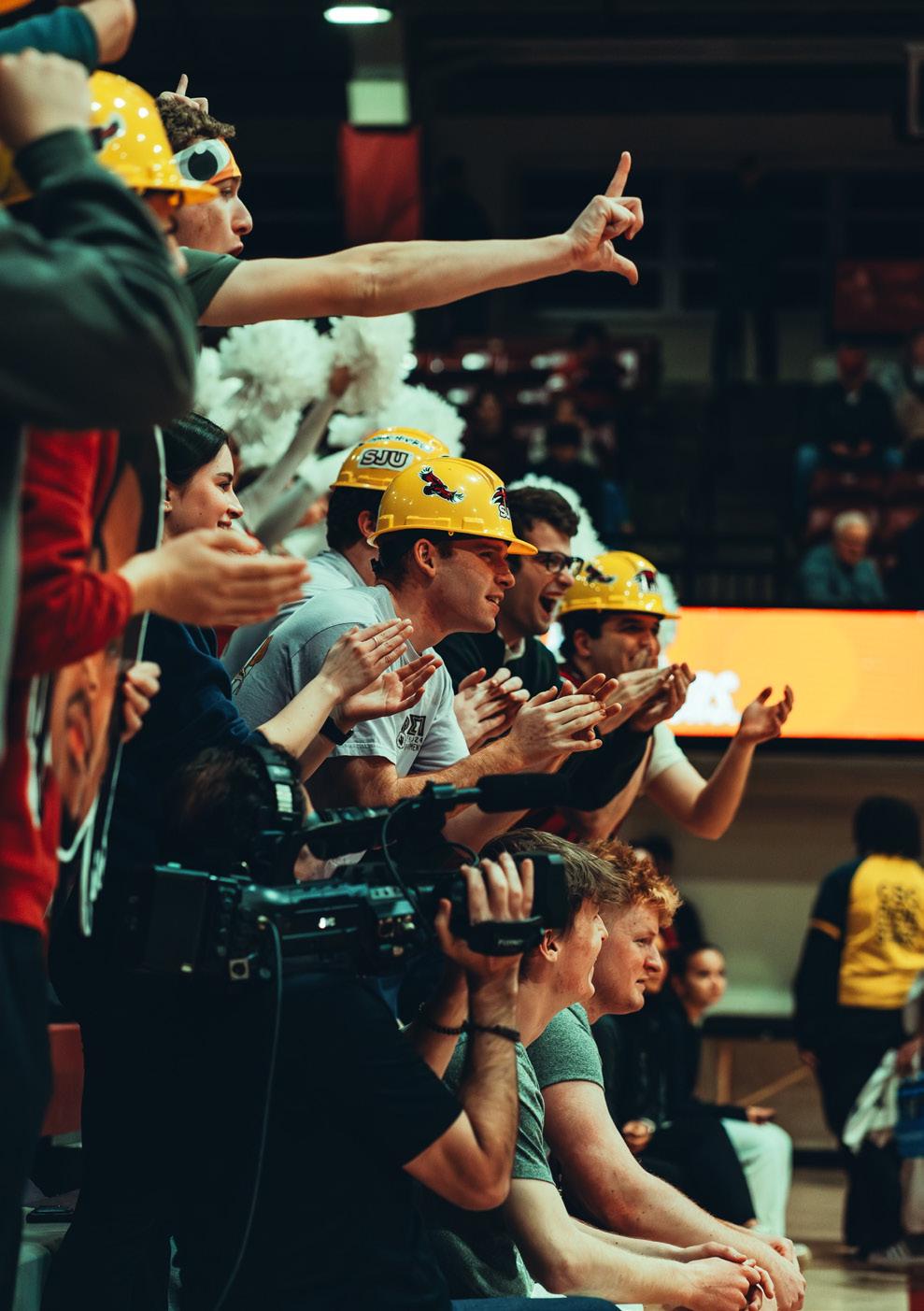
“I told him to chase what he thought was right for him as he knows himself best,” Soline Isaac said.
Isaac enrolled in a digital photography course during his first semester at St. Joe’s. At first, Isaac was frustrated. He didn’t know how the camera worked, but he didn’t let that deter him. He began to use the men’s club soccer team as test subjects. Eventually, he bought his own gear and began photographing the women’s soccer team.
By March 2024, Isaac was collaborating with the women’s soccer team. His role as a practice player for the women’s team, which he started in the fall of 2023, helped him land the opportunity.
Isaac said women’s soccer head coach Jess Mannella and assistant coaches Jake Dowiak
and Tori Corsaro supported him through it all.
“They’ve always looked for things for me to get through my camera, which is always an honor,” Issac said. “I came from grabbing a camera in digital photography, and now I’m doing social media work for a place that I never thought I would.”
Isaac’s friends and roommates Johan Mejia ’25 and Chris Monaco ’25, also transfers from Cabrini, were there with Isaac from the beginning at St. Joe’s. The three met after being paired up with other Cabrini transfer students in Sourin Hall. Now, they live together in a house off campus.
“We were all encouraging him, like ‘You should do it if it’s something you think you’ll be passionate about,’” Monaco said.
In fact, Isaac’s roommates helped him come up with a name for the account.
“He came in our suite at Sourin last year, and he had a different name. He asked us, ‘Do you all think this name is good?’ And we were like, ‘No, change it,’” Mejia said. “We started helping him out, and, eventually, we got to JeffFlicks, and he just stuck with it.”
Isaac said he receives plenty of messages after being at an event with his camera.
“He’s always very excited when he hits a big one,” Mejia said
Isaac’s friends and roommates see how hard he works to achieve that success.
“On the outside, a lot of people see him as a very goofy, funny person, but behind the scenes, he’s in his room for hours, editing pictures, putting things together, making little short videos for the soccer team, and he works very, very hard on it,” Monaco said.

Isaac is looking to do content creation in sports involving schools as his next steps, with hopes of working with Rutgers University’s football team or the soccer team
No matter what,
“He didn’t let the Cabrini closing break him,” Soline Isaac said. “He turned the unseen closing into a blessing with the help of Hawk Hill taking him in.”
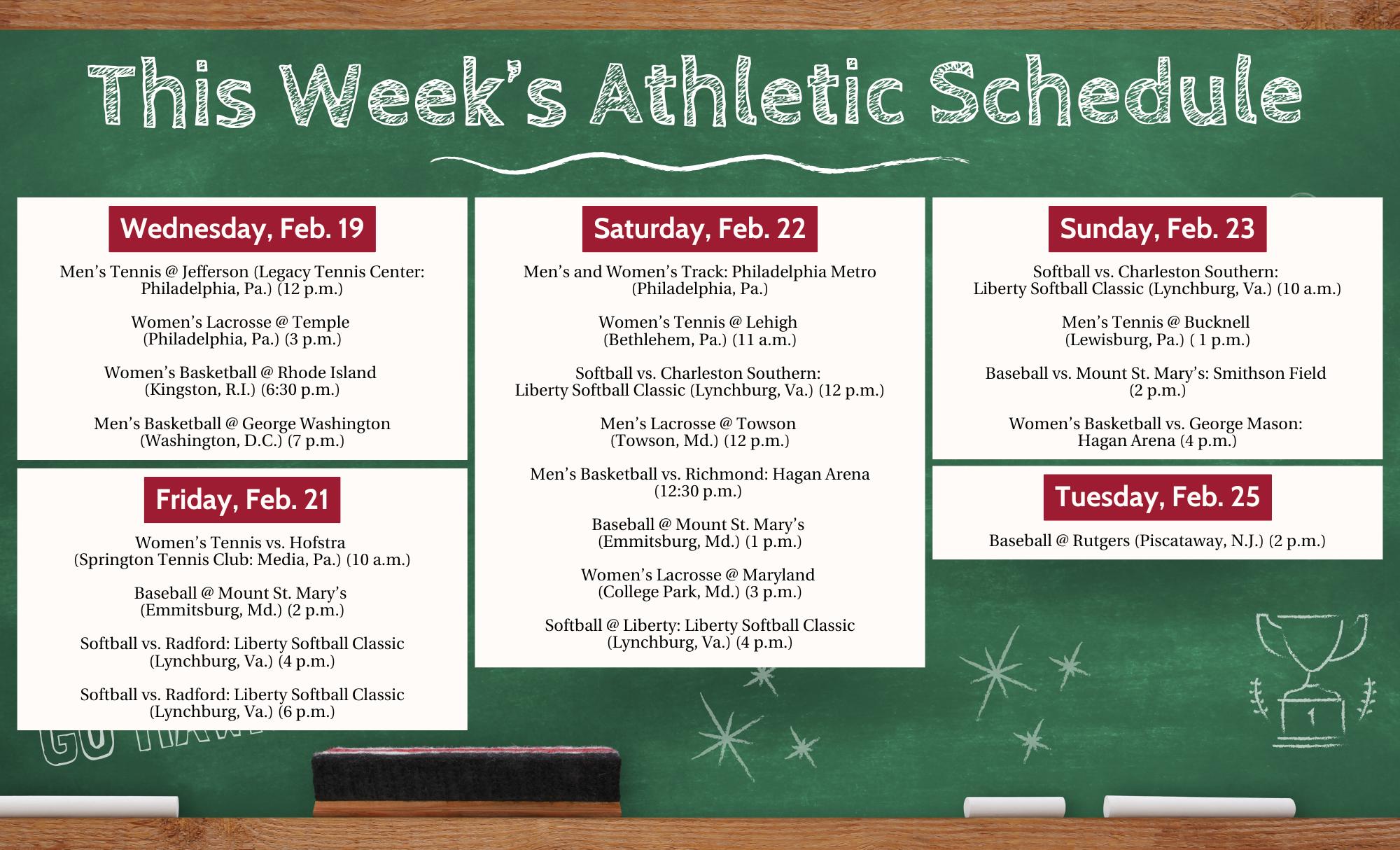
ZACH PODOLNCIK ’26 Sports Reporter
A new exhibition, “A League Apart,” has opened in Mandeville Hall for the semester. The exhibit focuses on the history and legacy of the Negro Leagues in Philadelphia.
The Negro Leagues were an all African American baseball league that gained popularity in the 1920s and 1930s. After Jackie Robinson broke the color barrier in Major League Baseball in 1947, the Negro Leagues’ presence declined as more players joined the MLB, and the 1951 season is generally considered to be the league’s last. More recently, on May 29, 2024, the MLB included Negro League stats in their official record books for the first time.
The exhibit, supported by St. Joe’s marketing program, features five Black players from Philadelphia: Octavius Catto, John Henry “Pop” Lloyd, Ed Bolden, Richard “Dick” Allen and Mo’ne Davis.
Dick Allen, featured in the exhibit as a bobblehead, went through the Phillies Triple-A team, the Arkansas Travelers, as the first Black player on the team and then joined the Phillies as their first Black star player.
Morgan Bryant, Ph.D., assistant professor of marketing, said the exhibit broadens students’ perspectives and prepares students for the upcoming MLB season.
“What an awesome way to get prepared for the impending start of baseball season than to come up to Haub and take a look
at a different part of history of professional baseball that Philadelphia played a really big part in that’s right here on campus, free and open and has ties to faculty, to people who are an integral part of the campus community,” Bryant said.
JP Lutz, assistant professor of practice in sports marketing, was instrumental in bringing the exhibit to St. Joe’s. Lutz said he wanted to bring the exhibit to the university because he views the exhibit as an important piece of Philadelphia history that can connect to the curriculum at St. Joe’s.
“I’m excited about the opportunity to build some awareness of the Negro Leagues, and also tie it in with a lot of the curriculum that we have, not only in sports marketing but some of the history courses and other business or writing courses that we offer,” Lutz said.
The exhibit features different memorabilia from the Negro Leagues like pictures, plaques and baseball cards. This allows for students to see a different perspective on an area of the sport that was ignored for many years and to remember how the players were treated before, and even after, the color barrier was broken is important, said John Lord, Ph.D., professor emeritus of marketing.
“The fact that the great Black players could not play in the major leagues until 1947 was indicative of the fact that the larger establishment didn’t recognize them,” Lord said. “So, this way, we could find out that baseball has a history which goes well beyond the white players.”
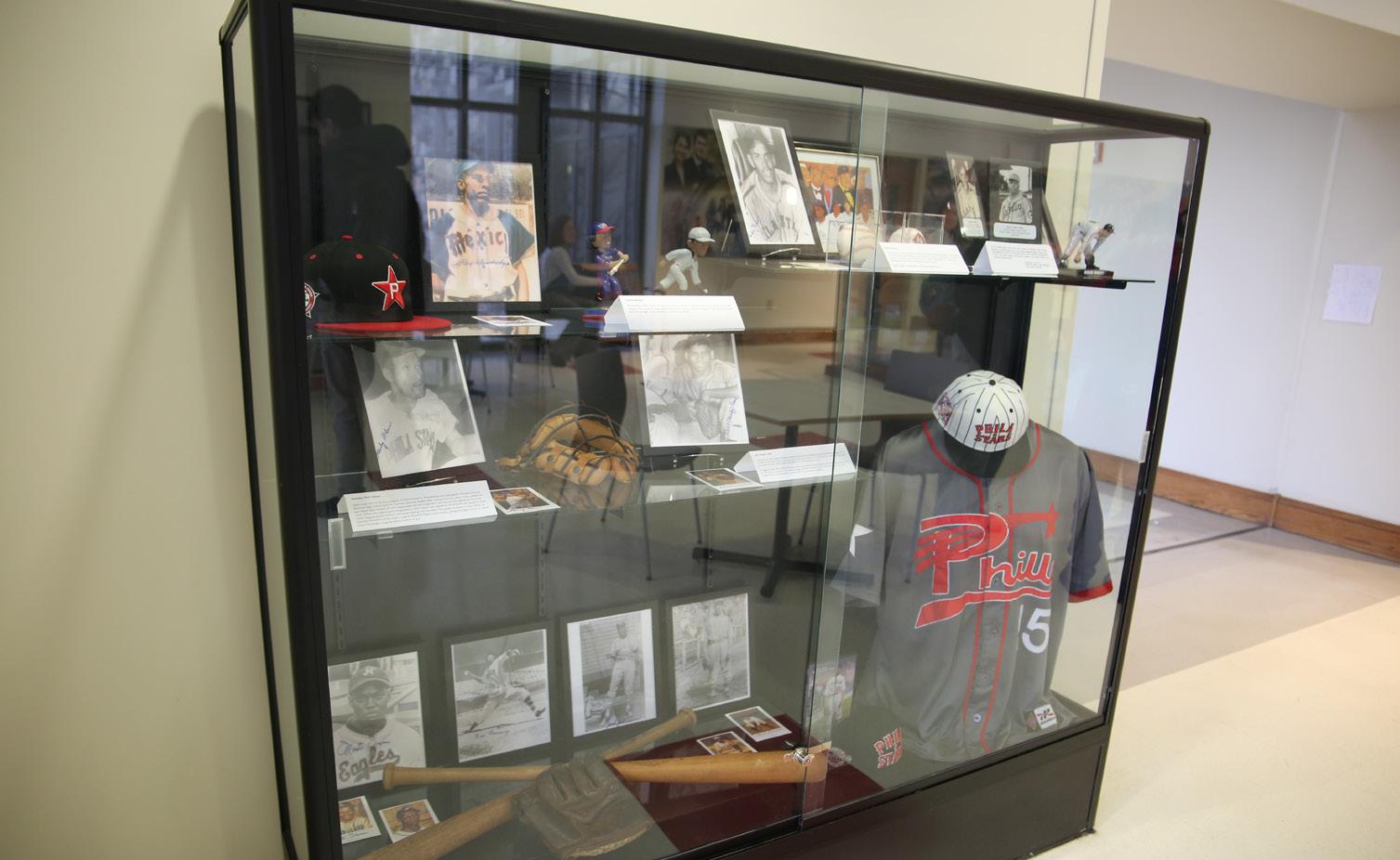
Don DiJulia ’67, former athletics director of St. Joe’s and now an officer in university advancement, said the exhibit helps students gain this perspective through telling the story of the Negro Leagues, making students more aware of the injustices Black people faced when pursuing a career in baseball. DiJulia recalled one student who was not a baseball fan but still drew value from the exhibit.
“It happens to be a baseball story, but we could tell stories in all parts of our life that this student was interested in,” DiJulia said. “There was inequality in voting. There was inequality in education. There was inequality in many areas, and this is just
a baseball story, so it made him curious to learn more about the other areas that impacted injustice over time.”
Lutz said it is important for students to carry on the memory of the Negro Leagues to not forget the challenges the players overcame.
“I think the important part for students is to, if you didn’t know anything about it, uncover and learn about the influence that the Negro Leagues have on baseball. And then also understand the barriers in baseball and the challenges that were in place during those times,” Lutz said.
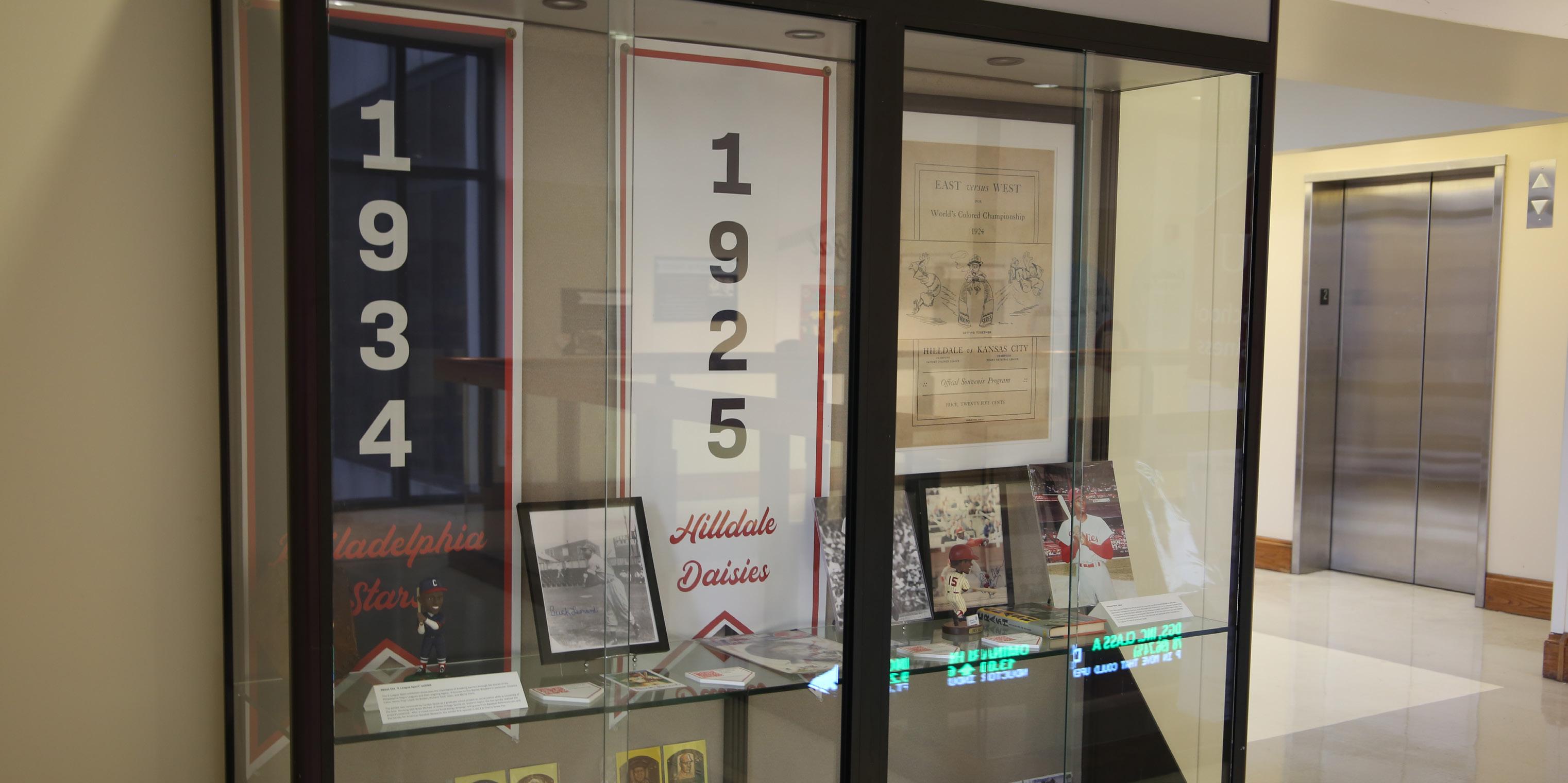
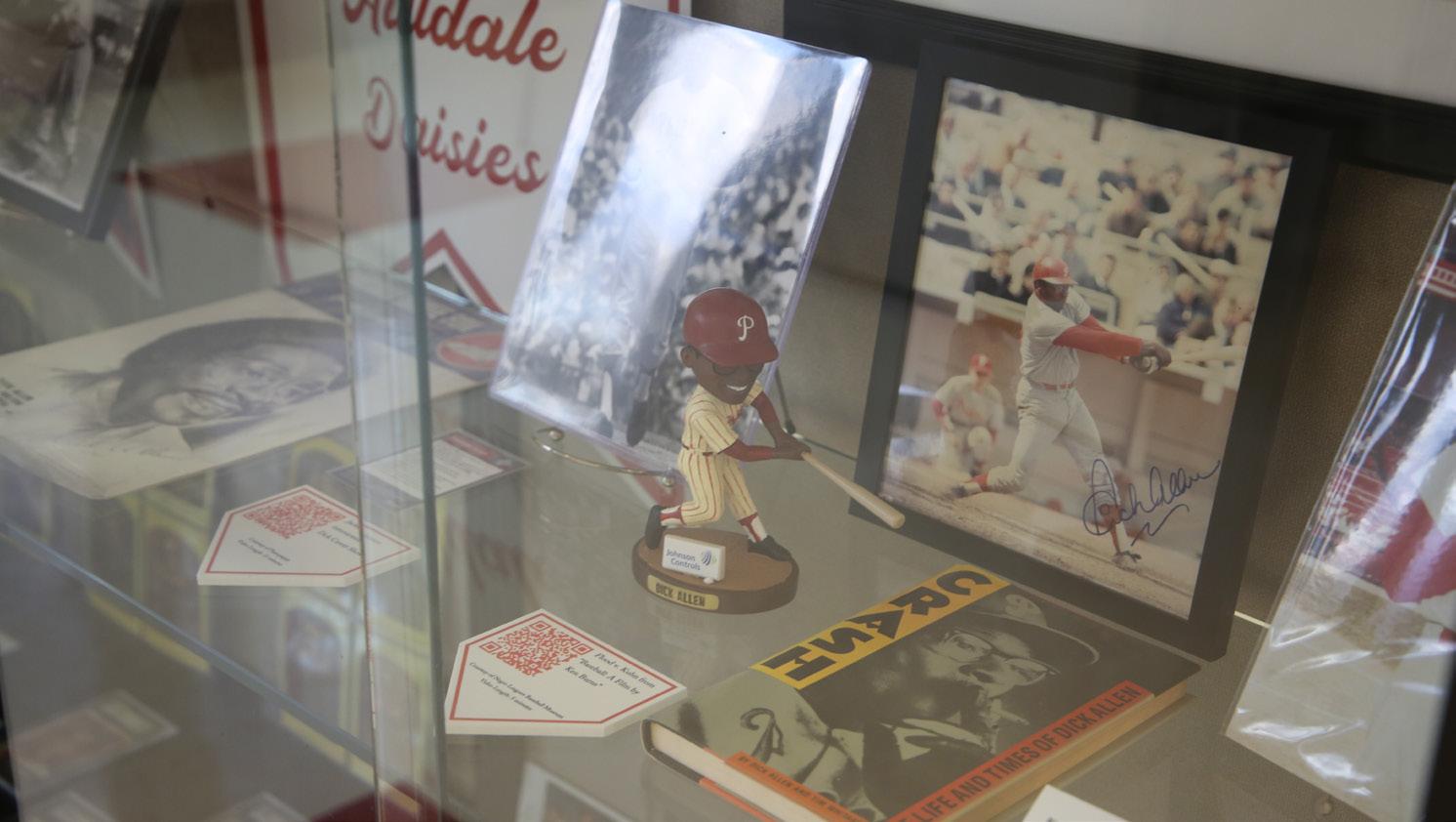
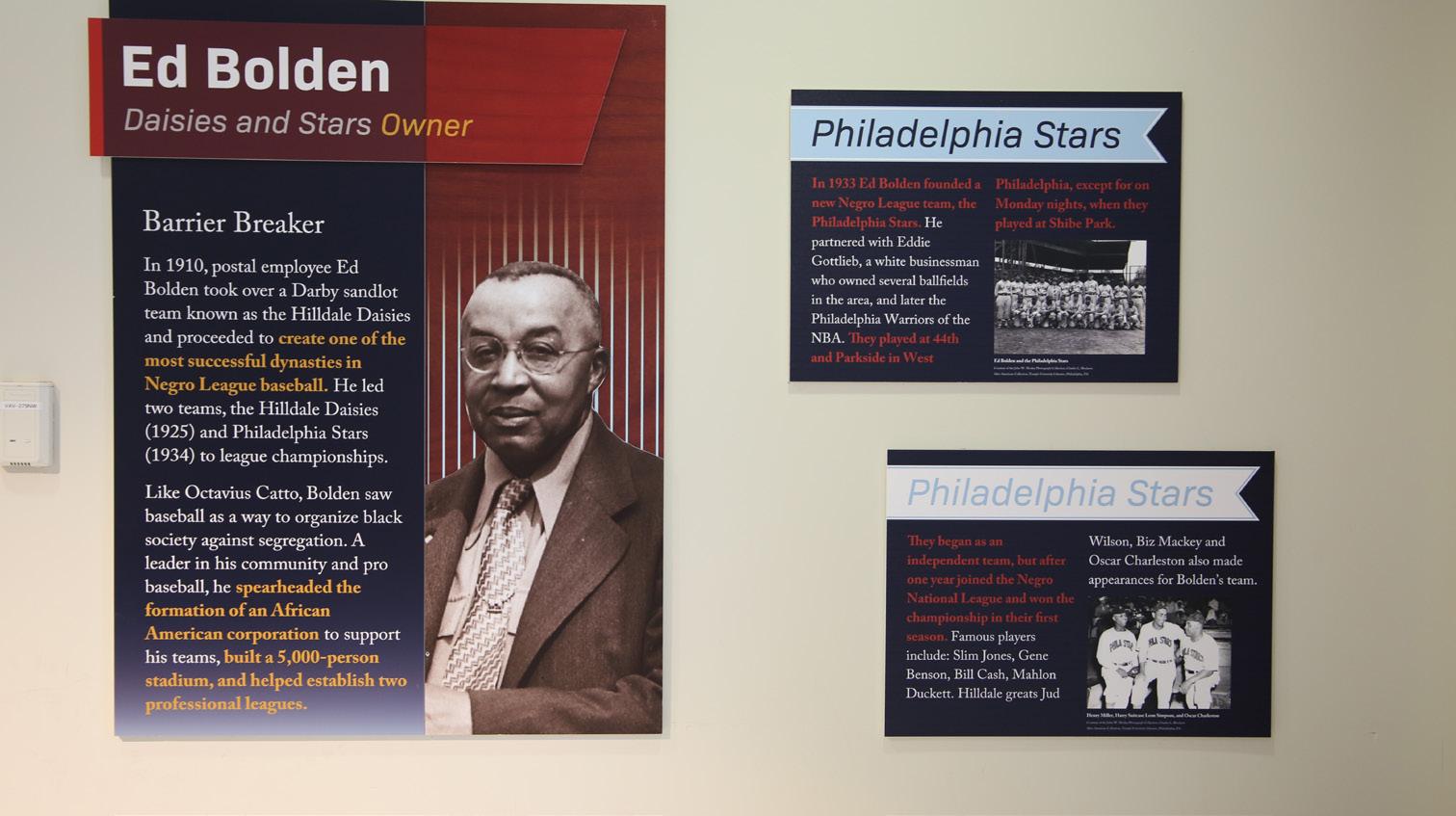

school, it always felt like a tight-knit community,” Boone said. “That’s how the Eagles fans and the Eagles atmosphere is as well. You feel like you’re at home, and you feel like you’re performing in front of your family and friends.”
Boone and Petrongolo have danced since childhood and shared the lifelong dream of making it to the professional level of dance. Boone grew up dancing at Dance to the Music School of Dance in Horsham, Pennsylvania. Petrongolo trained at Chez Dance Studio in Turnersville, New Jersey. After dancing at St. Joe’s, both women wanted to expand their journeys further.
“Cassie and I performed tricks that we learned from Saint Joseph’s University on the Super Bowl field,” Petrongolo said. “It was a tribute to everything we learned at St. Joe’s, and taking it to the biggest stage of dance — the Super Bowl — it was an incredible experience.”
Since the Philadelphia Eagles are Boone’s home team, there was no doubt about which team she wanted to audition for when she tried out in the spring of 2021.
The tryout process is three months long and begins online. Auditioners submit an open call video performing

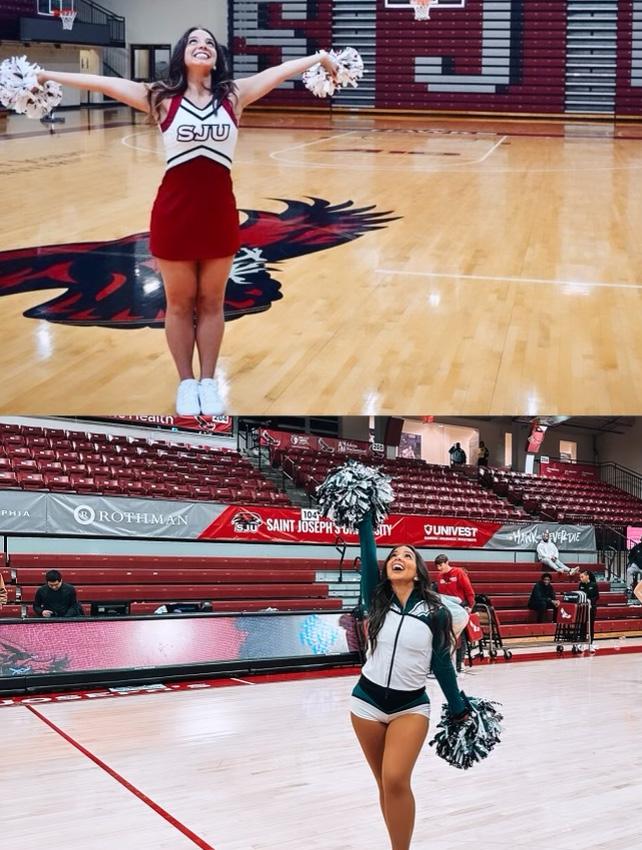
provided choreography. In the semifinals, the auditioners learn and perform new dances. Throughout this process, there are online interviews and Zoom sessions. Auditioners are selected in person for the business interview round. Alongside being a cheerleader, the women are also brand ambassadors and represent the community. The rounds start to narrow down, and the final team is selected.
Theteam practiceson Tuesdayand Wednesday nights from 7 to 10 p.m. Throughout the week, the cheerleaders make appearances and finish the week off performing at home games.
Both Boone and Petrongolo also juggle day jobs while cheering for the Eagles. Petrongolo works Monday through Friday as a first grade teacher in Williamstown, New Jersey. On Thursdays, Petrongolo teaches dance at her hometown studio, Chez. Petrongolo said performing in the Super Bowl in 2023 was an incredible experience, and getting to come back and perform in the Super Bowl this year was even better.
“Seeing that green and black and silver confetti come out was a full circle moment
that we did it,” Petrongolo said.

